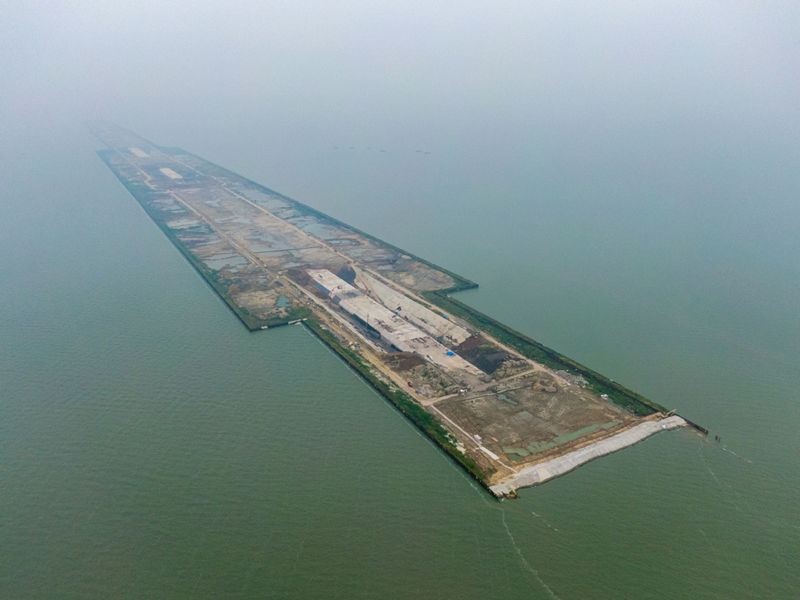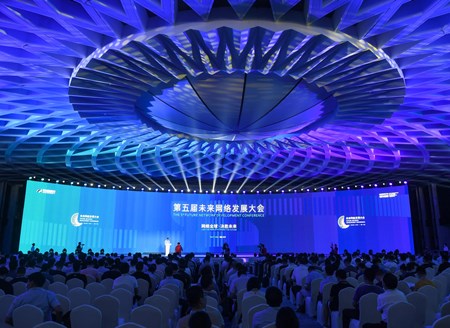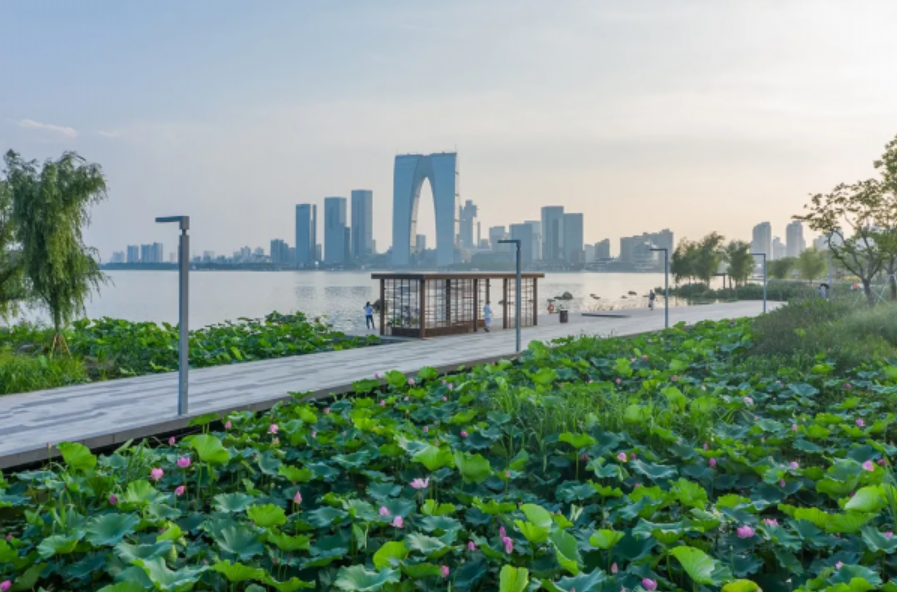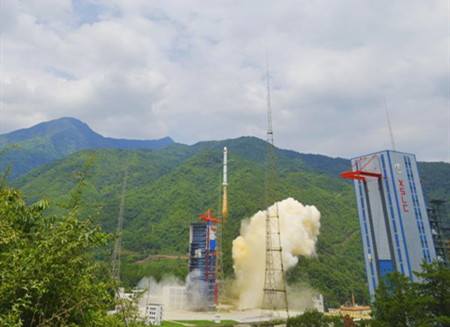
Aerial photo taken on Sept 5, 2021 shows the construction site of Nanquan section of Taihu Tunnel, part of the Changzhou-Wuxi Highway, in Wuxi, East China's Jiangsu province.[Photo/Xinhua]
Taihu Tunnel, the longest passageway under a lake ever built in China, is expected to open to traffic in December and bring several cities and regions in the Yangtze River Delta region closer together.
Tunnel boring for the mega project, which will stretch for 10.79 kilometers under Taihu Lake and cost around 5 billion yuan ($775.7 million), is scheduled to be completed around Oct 10, project builders said in a group interview in late September.
The tunnel will cut travel time between Mashan and Nanquan - lakeside subdistricts of the city of Wuxi in southern Jiangsu province - by half compared with the current commute, and make it more convenient to travel from the urban area of Wuxi to Yixing, a county-level city administered by Wuxi.
"In the Yangtze River Delta region, it rarely takes more than one hour to travel between a prefecture-level city and a county in its jurisdiction," said Chen Degang, director of the publicity department at CCCC Third Harbor Engineering Co.
The project will bring cities like Shanghai, Nanjing, Suzhou and Wuxi closer together and boost the regional economy, he added.
The tunnel, with a designed speed for motor vehicles of up to 100 km/h, is a two-way, six-lane highway built by CCCC Third Harbor Engineering and China Tiesiju Civil Engineering Group.
Construction began in early 2018, and the tunnel will be a key section of the Suzhou-Wuxi-Changzhou South Highway, which, once fully operational, will complete the second road artery between Shanghai and Nanjing, the capital of Jiangsu province. The highway will complement the decades-old, heavily traveled Shanghai-Nanjing Highway.
In this sense, the operation of the tunnel will further strengthen connectivity among the three cities of Suzhou, Wuxi and Changzhou in southern Jiangsu, as well as help promote the integrated development of the Yangtze River Delta region, which encompasses Jiangsu, Zhejiang and Anhui provinces and Shanghai municipality.
The region accounts for about one-sixth of China's population and one-fourth of the country's GDP. China made the region's integration a national strategy in November 2018.
Economic windfall
Mashan, a peninsula in Wuxi that juts out into Taihu Lake, will be an immediate beneficiary of the tunnel.
The 65-square-km subdistrict of the city is home to the renowned Lingshan Grand Buddha, a national 5A-level tourist attraction, as well as pharmaceutical plants invested in by companies such as Pfizer and WuXi AppTec.
"With the operation of Taihu Tunnel, residents will find it much more convenient to visit Mashan's high-end medical centers, fueling the development of its highly anticipated health and eldercare service industries," said Liu Xiaoyu, an official at the Wuxi Taihu Lake National Tourist Resort.
The tunnel will bring more tourists to Mashan's Lingshan scenic area as well as its surrounding homestay hotels, he added.
In addition, the vast majority of people working in Mashan live in other regions of Wuxi and usually commute a total of two hours daily.
"The lengthy commuting time has long dampened people's enthusiasm to seek and keep jobs in Mashan," said Qian Chunhui, another official at Wuxi Taihu Lake National Tourist Resort. "Managers at some pharmaceutical plants often complain that a main reason for their loss of high-profile talent is the region's traffic inconvenience."
Yixing will also reap immediate benefits. It currently takes two hours to travel by car from Yixing in the west to the southern part of Wuxi. The tunnel will cut travel time in half.
Technical breakthrough
The tunnel is as wide as 43.2 meters and consists of two bores, each measuring 17.45 meters wide.
The biggest engineering challenge has been seepage-proofing the tunnel, which lies as deep as 20 meters beneath the lake bed, according to Li Baozhi, a project manager from CCCC Third Harbor Engineering.
The project contractor invented new methods for processing high-quality concrete and developed an intelligent, real-time monitoring system for the pouring of concrete. These practices are being promoted across the province by the Jiangsu Transportation Engineering Construction Bureau as a seepage-proofing guideline for such tunnels.
To protect the ecology of Taihu Lake, the contractor has spared no effort in eliminating dust and noise pollution by running a totally enclosed concrete mixing plant, using eco-friendly vehicles, and replacing diesel pile hammers with hydraulic ones that reduce the decibel level by half.
The tunnel's three ventilation areas are designed to be scenic spots integrated with the surrounding landscape. The one in the middle of the tunnel was transformed into an islet with a diameter of 150 meters; the one on the western side near Mashan is a conch-shaped statue; and the one on the eastern side near Nanquan resembles an ancient boat.






